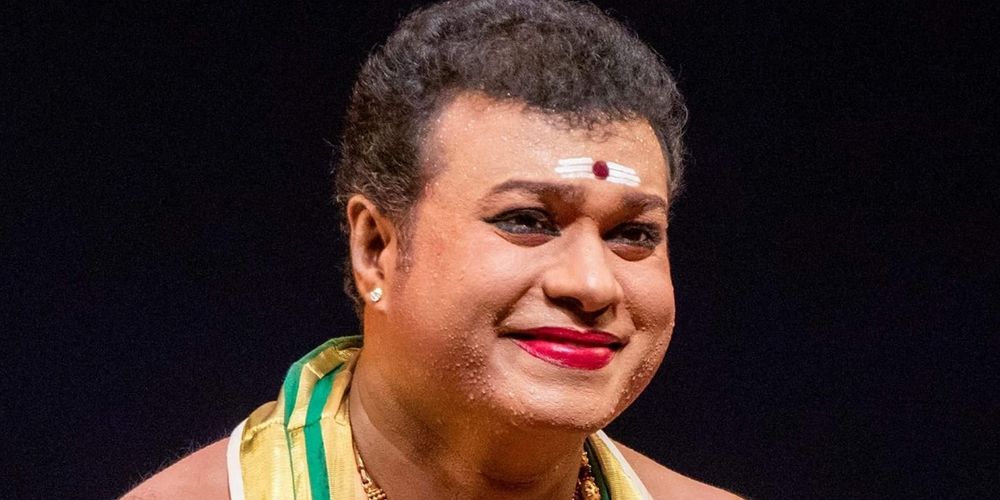Mohiniyattam dancer RLV Ramakrishnan cites casteism and gender bias in classical arts, triggering a controversy in Kerala
A month has passed after classical dancer Dr RLV Ramakrishnan attempted suicide. On October 3, the Mohiniyattam artiste was found lying unconscious and admitted to hospital in a critical state. Medical tests found he had had an overdose of sleeping pills.
Why did Ramakrishnan resort to the extreme step? The 44-year-old artiste, it was soon learnt, was frustrated over an “unfair treatment” by Kerala Sangeetha Nataka Akademi, the apex cultural institution of his native state.
Ramakrishnan recovered fast. Today, he has much stronger support from several quarters. Yet, anger resurfaces when Ramakrishnan recalls all that had led him to think of killing himself and eventually execute a plan.
“You might think how much a coward I am when I tried to kill myself. I did hear people saying so,” he says in a Facebook post on November 2. “To those who pretend to be great cultural leaders, can I ask a question? Isn’t it better to die than live with a dead mind or have no opinion about anything?”
Dancer’s woes
Ramakrishnan’s attempted suicide may have shocked many, but his followers on social media had been sensing the intensity of the dancer’s desperation for a while. In fact, an FB post by the artiste four days before trying to kill himself reads cathartic, more so in hindsight.
“Really I had little sleep last night,” begins the status on September 29. “Akademi secretary (N) Radhakrishnan Nair’s words shattered me. They were unbearable for anyone having applied for an online dance event.”
The programme refers to the Akademi’s (ongoing) Covid-19 Financial Relief project. Announced on April 19 amid a national lockdown aimed at curtailing the spread of the coronavirus, the notification invited artistes to give virtual performances. Those shortlisted will also be paid Rs 2,000 over two months, the secretary revealed.
One could apply (online) till April 25, and Ramakrishnan did it. On subsequent enquiry, the secretary told him that the 1958-founded Akademi will “lose its image” if Ramakrishnan was permitted to perform, according to the dancer. Nair said it will also “bring in massive criticism”, according to the artiste’s FB post on September 29.
The Akademi secretary refuted the allegation the next day. To him, the institution was yet to finalise the list of dancers or musicians who are to perform under the project. “We have received Ramakrishnan’s application, and accepted it. Right now, only theatre artistes have got clearance.”
Ramakrishnan had claimed the secretary refused to meet him on a visit to the Akademi in Thrissur, the state’s cultural capital. This, Nair said, was owing to his poor health that was forcing the octogenarian to avoid visitors amid Covid-19. The dancer also accused Akademi chairperson KPAC Lalitha of “indifference” and “double standards”.
Presumed reasons
Ramakrishnan goes on to cite casteism and gender bias playing a key role. “My status as a Dalit, coupled with being a man, has led Nair to ignore my application,” he says. Mohiniyattam, often described as a ‘Dance of the Enchantress’, is performed by women predominantly. So much so, the art-form has only a handful of male practitioners.
Ramakrishnan underlines that he was born into the underprivileged Paraya community, traditionally considered untouchable. The poverty-riddled family had another artiste: Ramakrishnan’s elder brother, a movie actor. Kalabhavan Mani, also a folk singer with big fan following, died in March 2016, aged 45.
Their household is in central Kerala’s Chalakudy. The place is almost in the middle of two cultural institutions to its south and north. RLV College of Music in Tripunithura and Kalamandalam in Cheruthuruthy are from where Ramakrishnan earned his MA (in Mohiniyattam) and a PhD respectively.
He has been a guest lecturer at the dance department of Sree Sankara University of Sanskrit in Kalady, 23 km southeast of his home. That status perhaps worked against Ramakrishnan in the Akademi case, going by his own words. The job implied an income; the online programme is for those without other means to earn. Ramakrishnan counters, saying the lectureship is an on-and-off engagement.
As for the females-only tag to Mohiniyattam, the artiste says history disproves it. The gurus at the Travancore palace in southern Kerala were males, he points out citing the times of the art-loving Maharaja Swathi Thirunal (1813-46). Even Kalamandalam (established in 1930) had a male (Korattikara Krishna Panikkar) to train Mohiniyattam students, he adds. “In any case, how can I be denied chances even if the dance is women’s?”
The controversy continues to rage, with activists holding demonstrations in front of the Akademi. Amid the calls for sacking the secretary, Ramakrishnan joins the group with his protest dances. In civil dress and wearing the Covid-19 mask, he switches on recorded music and performs daytime Mohiniyattam on the road.


1 Comment
So sad to hear about the struggle he had to go through.Discrimination based on gender is nothing but narrow-mindedness. I think such regressive leaders should be terminated from his position. I support this artist and hope Kerala Sangeetha Nataka Academy replaces with a better minded person who promotes art irrespective of gender and caste.